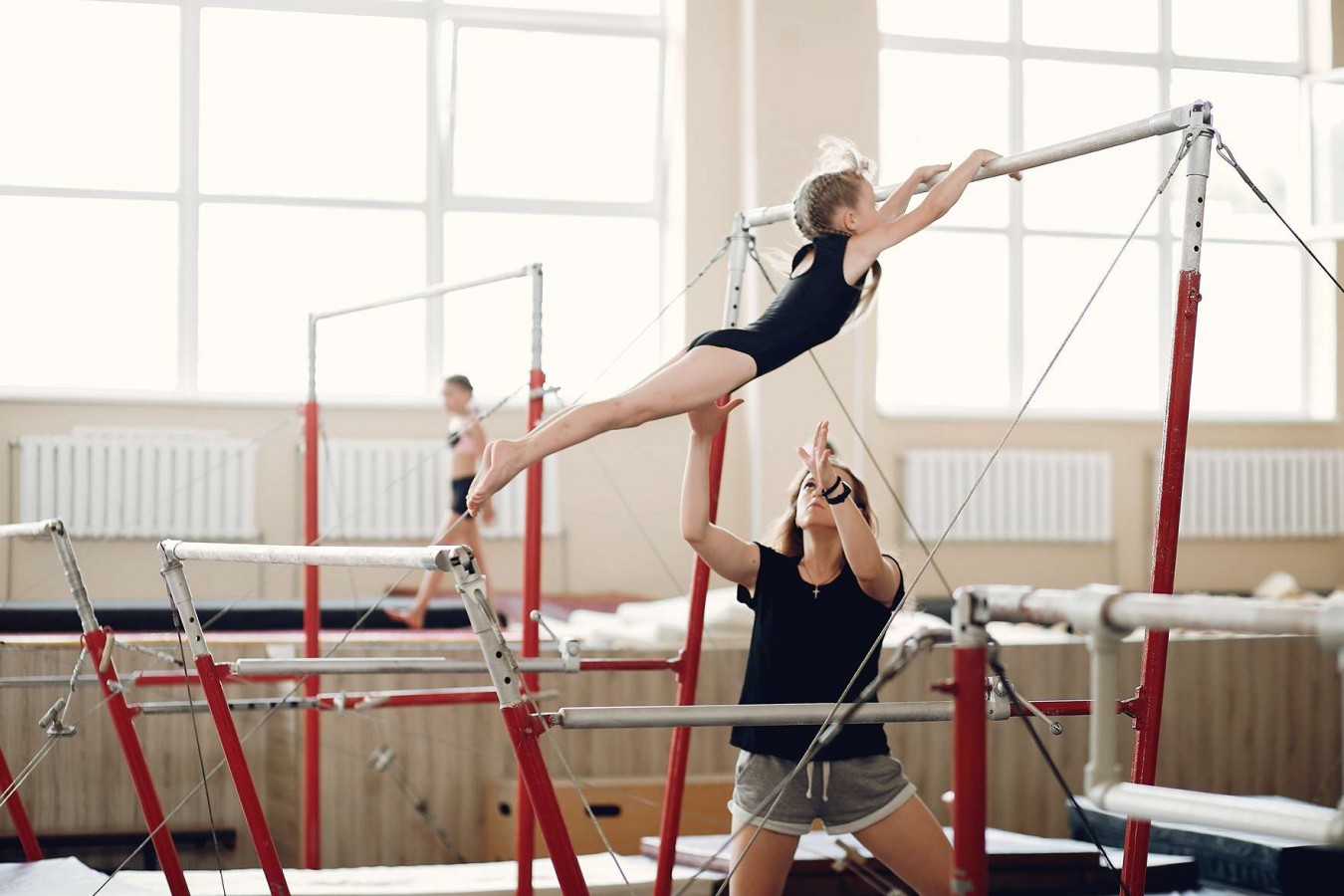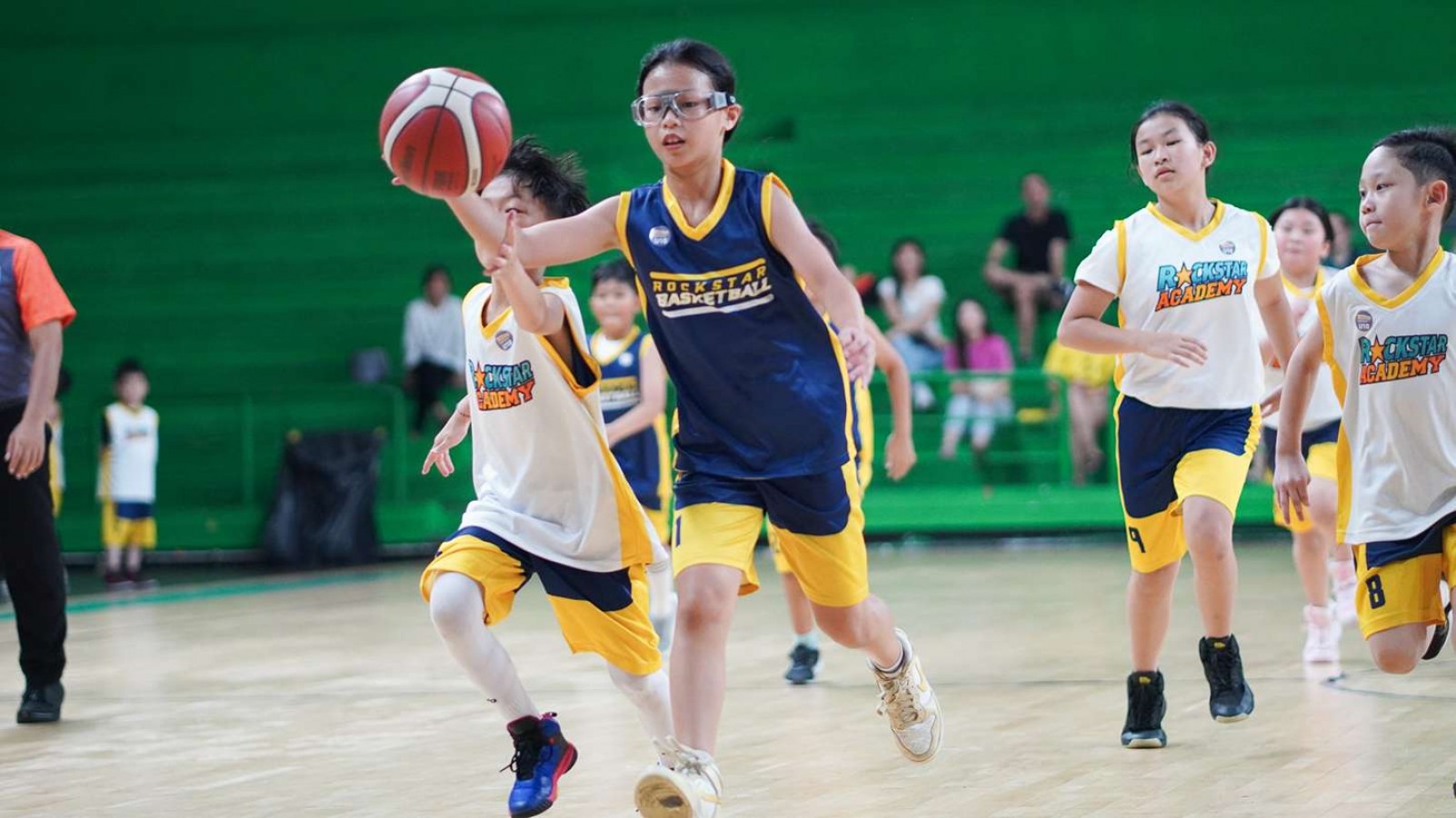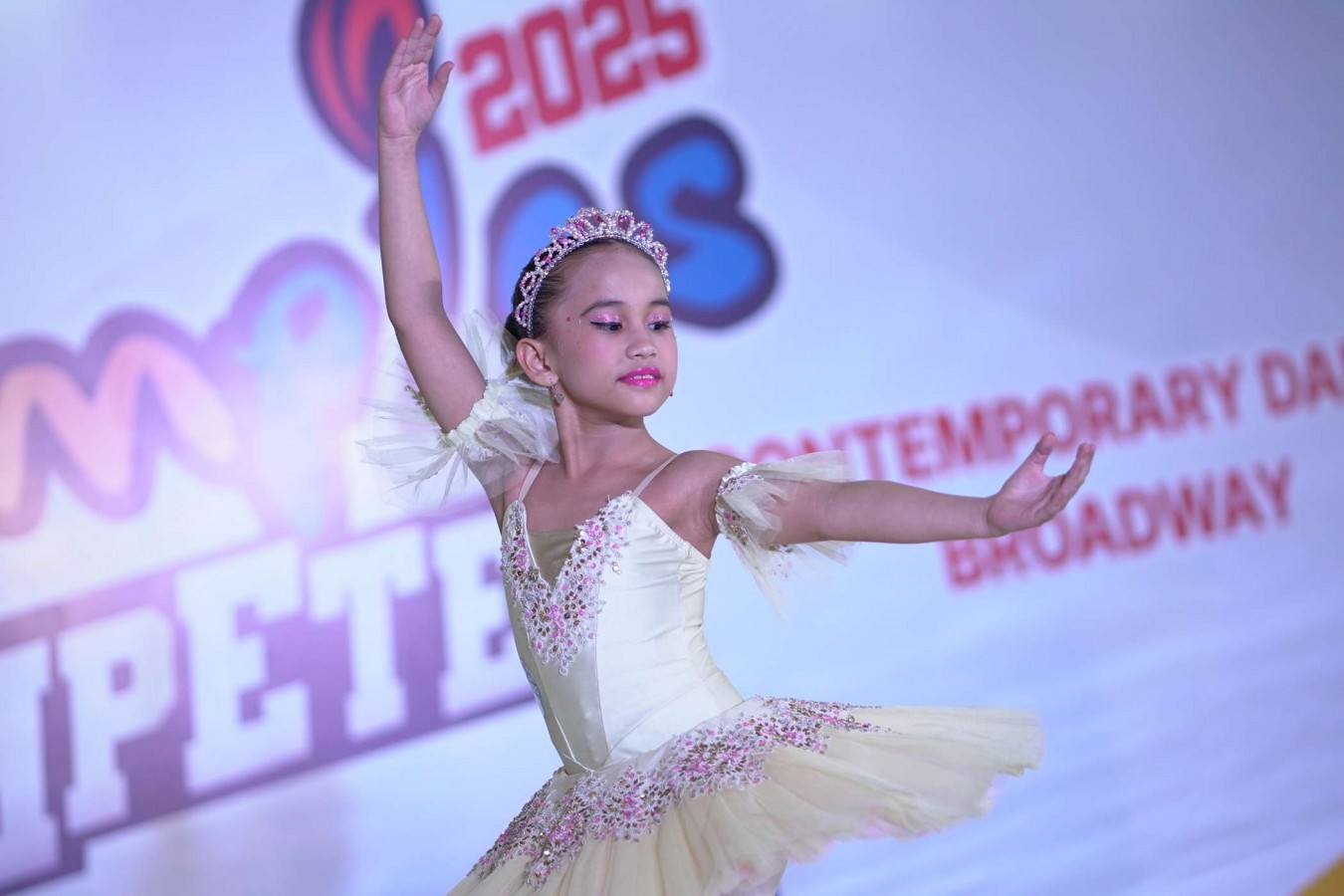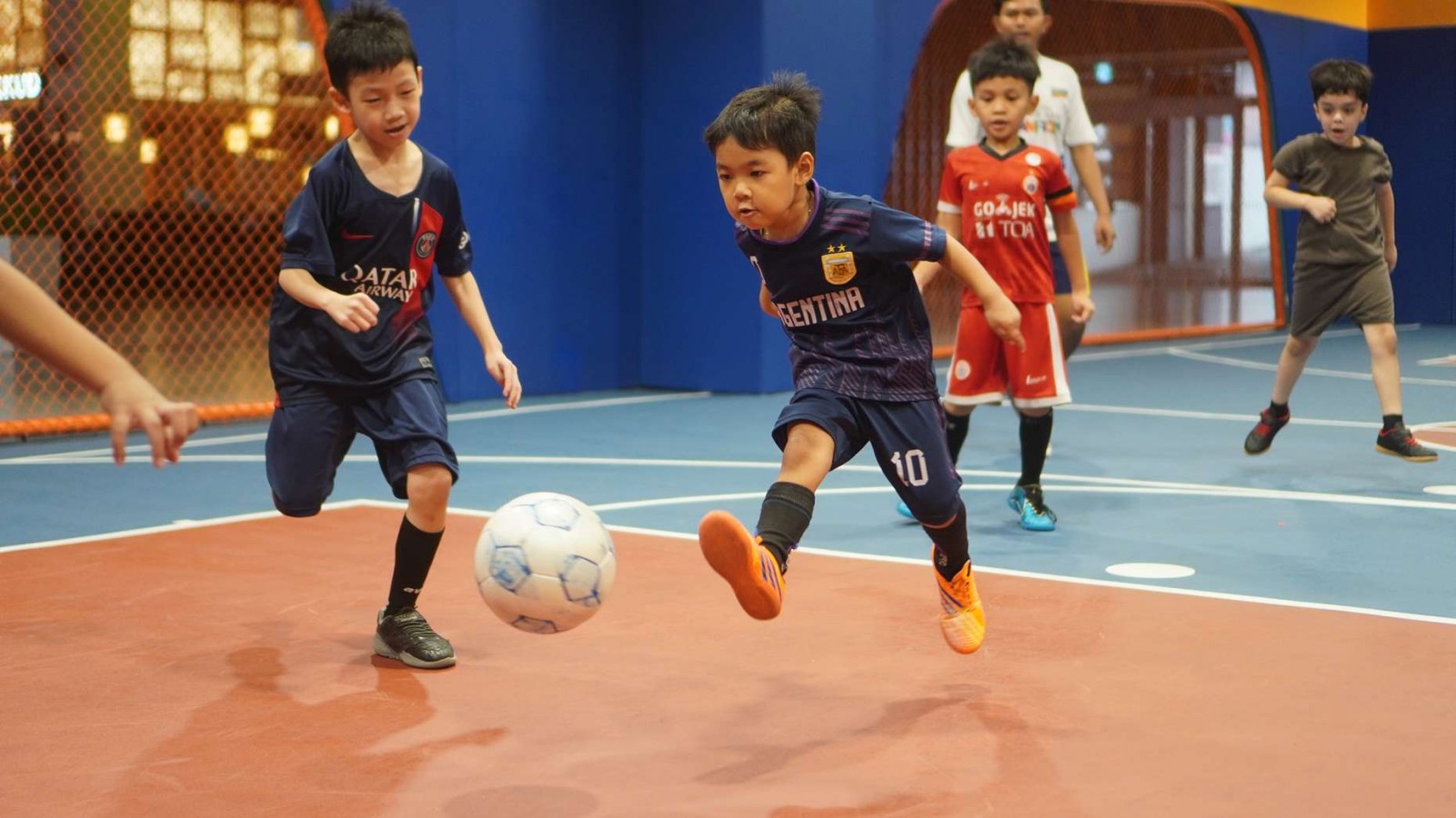What Is Gymnastics? Definition, History, Benefits and More

Gymnastics is a sport encompassing grace, strength, and precision and has captivated audiences for centuries. From its ancient origins to modern-day competitions, gymnastics continues to enthrall athletes and spectators alike.
In this comprehensive guide, we delve into the essence of gymnastics, exploring its definition, rich history, purpose, rules, basic moves, health benefits, and its significance in institutions like the Rockstar Academy.
Definition of Gymnastics
Gymnastics is derived from the Greek word "gymnazein," meaning "to exercise naked”. It embodies a combination of physical strength, flexibility, balance, agility, coordination, and grace. Additionally, it also encompasses a wide range of activities performed on apparatuses such as the balance beam, uneven bars, vault, and floor exercise.
History of Gymnastics
Gymnastics traces its roots back to ancient civilizations, where physical fitness and agility were paramount. The Greeks practiced gymnastics as part of their military training, emphasizing strength, flexibility, and discipline. Similarly, the Romans incorporated gymnastic exercises into their military drills and recreational activities.
In the modern era, gymnastics experienced a resurgence during the 19th century in Europe. Pioneers like Friedrich Ludwig Jahn, known as the "father of gymnastics," popularized gymnastic exercises as a means of promoting physical education and national pride. Gymnastics evolved into a competitive sport, gaining prominence in international events like the Olympic Games.
Rules of Gymnastics
Gymnastics adheres to a set of rules and regulations established by governing bodies such as the International Gymnastics Federation (FIG) to ensure fair competition and safety for athletes.
These rules govern various aspects of gymnastics competitions, including scoring, equipment usage, attire, and conduct. Here are essential rules of gymnastics:
1. Scoring System
Gymnastics competitions employ a scoring system that evaluates athletes' performances based on execution, difficulty, artistry, and adherence to specific criteria for each apparatus. Judges will assign scores, deducting points for errors such as falls, imprecise movements, incomplete routines, or violations of technical requirements.
2. Apparatus Specifications
Each gymnastics apparatus, including the balance beam, uneven bars, vault, and floor exercise, has specific dimensions, construction requirements, and safety regulations outlined by the FIG. Competitors must adhere to these specifications to ensure uniformity and fairness across competitions.
3. Attire and Equipment
Gymnasts are required to wear appropriate attire that allows for freedom of movement and adherence to safety standards. This typically includes leotards or form-fitting clothing, grips, chalk, and appropriate footwear for certain activities. The use of unauthorized equipment or attire may result in penalties or disqualification.
4. Age and Eligibility
Gymnastics competitions may have age and eligibility requirements stipulated by governing bodies and event organizers. Athletes must meet these criteria to participate in specific competitions or age divisions. Failure to comply with age or eligibility rules may lead to disqualification or sanctions.
5. Code of Conduct
Gymnasts, coaches, judges, and officials are expected to uphold high standards of sportsmanship, integrity, and ethical conduct throughout competitions and training sessions.
6. Safety Protocols
Safety is the most important thing in gymnastics, and competitions enforce stringent safety protocols to minimize the risk of injuries. Gymnasts must perform within their skill level, use proper technique, and adhere to spotting and equipment guidelines. In competitions, they usually include medical personnel and emergency procedures to address injuries promptly.
Basic Moves of Gymnastics
Here are some fundamental techniques that gymnasts should master:
A. Forward Roll
The forward roll is one of the first moves beginners learn in gymnastics. It involves tucking the head and rolling forward, transitioning from a standing position to a tucked position and then back to standing. This move teaches body control, coordination, and confidence in motion.
B. Cartwheel
The cartwheel is a classic gymnastics move that combines balance, strength, and flexibility. Gymnasts perform a sideways rotation, propelling themselves off one hand while kicking their legs over their body in a graceful arc. Cartwheels enhance upper body strength, coordination, and spatial awareness.
C. Handstand
The handstand epitomizes balance and control in gymnastics. Athletes invert their bodies, balancing upside down with their hands on the floor and feet pointing towards the sky. Mastering the handstand requires core strength, shoulder stability, and precise alignment, serving as a fundamental skill for more advanced maneuvers.
D. Back Walkover
A back walkover is a dynamic movement where the gymnast transitions from a standing position to a backward arching position, ultimately landing on their feet. This move requires flexibility in the shoulders, back, and legs, as well as strength in the core and arms to support the body's weight.
E. Split Leap
The split leap is a combination of a split and a jump, where gymnasts perform a split while leaping into the air. This move showcases flexibility, power, and control as athletes propel themselves upward while maintaining an extended split position. Split leaps are commonly seen in floor routines and beam exercises.
F. Bridge
The bridge, also known as the backbend, involves arching the back while supporting the body weight with the hands and feet. This move enhances spinal flexibility, strengthens the back and shoulders, and improves overall body alignment. Gymnasts often incorporate bridges into warm-up routines and as a component of advanced skills like back handsprings.
G. Pike Position
The pike position is characterized by a straight body with legs extended and toes pointed, forming a 90-degree angle at the hips. Gymnasts utilize the pike position in various skills such as dives, somersaults, and dismounts, emphasizing body control, alignment, and aerial awareness.
Health Benefits of Gymnastics
From physical fitness to mental resilience, engaging in gymnastics fosters holistic development and promotes a healthy lifestyle. Here, we explore the comprehensive explanations of health benefits of gymnastics in detail:
1. Physical Fitness
Gymnastics serves as a comprehensive form of exercise, targeting various aspects of physical fitness. Participants engage in dynamic movements that enhance cardiovascular endurance, muscular strength, flexibility, and agility.
Through repetitive practice of skills such as flips, twists, and balances, gymnasts develop lean muscle mass, improve joint mobility, and refine motor coordination.
2. Core Strength and Stability
Central to gymnastics is the cultivation of core strength and stability. By performing exercises like hollow body holds, planks, and leg lifts, gymnasts develop a robust core, which serves as the foundation for balance, control, and power in movement.
3. Flexibility and Range of Motion
Flexibility is a hallmark of gymnastics, as athletes strive to achieve optimal range of motion in their movements. Through regular stretching and conditioning routines, gymnasts improve flexibility in muscles, tendons, and ligaments, reducing the risk of injury and enhancing overall athletic performance.
4. Bone Density and Skeletal Health
NIH Research mentions that weight-bearing activities inherent in gymnastics contribute to the development of strong bones and optimal skeletal health. The impact of landing and weight-bearing exercises stimulates bone remodeling, leading to increased bone density and resistance to fractures.
Engaging in gymnastics during childhood and adolescence is particularly beneficial for bone development, laying the foundation for lifelong skeletal health.
5. Cardiovascular Endurance
Gymnastics routines often involve sequences of high-intensity movements interspersed with periods of rest or lower intensity. This interval training format challenges the cardiovascular system, improving aerobic capacity and endurance over time.
6. Mental Well-being
Beyond the physical realm, gymnastics promotes mental well-being by fostering discipline, focus, and resilience. Athletes learn to set goals, manage stress, and overcome obstacles through dedicated practice and perseverance.
The mental discipline cultivated in gymnastics also empowers individuals to navigate challenges with confidence and composure in everyday life.
7. Coordination and Motor Skills
Gymnastics requires precise coordination of movements, demanding a high degree of kinesthetic awareness and proprioception. Through repetition and refinement of skills, gymnasts hone their coordination and motor skills, enhancing spatial awareness, timing, and body control.
Ready To Embrace Gymnastics?
Engaging in gymnastics fosters holistic development, instilling discipline, confidence, and resilience from an early age. Through structured training, young athletes not only enhance their physical fitness, flexibility, and coordination but also cultivate valuable life skills such as teamwork, perseverance, and goal-setting.
If your children show interest in gymnastics, enrolling them in a program can be a rewarding decision to enhance their skills and foster their personal development. Consider Rockstar Academy, renowned for its exceptional Sports & Performing Arts programs, including comprehensive gymnastics offerings.
At Rockstar Academy, your children can engage in structured gymnastics programs featuring Gymnastics Testing and Gymnastics Elite Championships, designed to nurture talent and prepare students for competitive endeavors.
Gymnastics Testing ensures progression to higher levels, while Gymnastics Elite Championships promote excellence, sportsmanship, and resilience.
With a commitment to holistic development and a free trial class available, Rockstar Academy welcomes aspiring gymnasts to embark on a journey of growth, achievement, and joy. Reach out to Rockstar Academy today to explore the world of gymnastics and unleash your child's potential.
FAQ
Is gymnastics suitable for all ages?
Yes, gymnastics caters to individuals of all ages and abilities. There are programs tailored for children, teenagers, adults, and even seniors, accommodating diverse skill levels and fitness goals.
Do I need prior experience to enroll in gymnastics classes?
No prior experience is necessary to begin gymnastics training. Beginners receive guidance and instruction tailored to their level of proficiency, gradually progressing through foundational skills and techniques.
What equipment do I need for gymnastics?
Basic gymnastics attire typically includes leotards or form-fitting clothing that allows for freedom of movement. Additionally, gymnasts may require grips, chalk, and appropriate footwear for certain activities.
How often should I practice gymnastics?
The frequency of gymnastics training depends on individual goals, schedules, and commitment levels. Ideally, participants should engage in regular practice sessions to build strength, skill, and proficiency over time.



